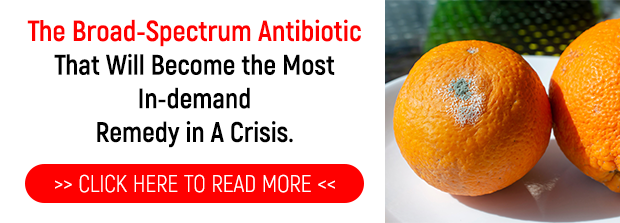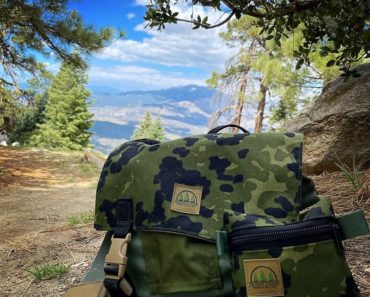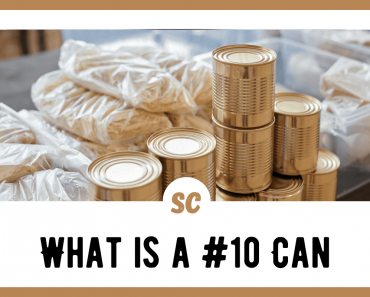Plants are awesome because they give us food, shelter, clothes, and medicine. They can even boost our mood and make us grin. Apart from their low content of water, they pretty much cover all the essentials for staying alive.
To make life more than just a daily grind, it’s smart to get to know the plants around you. Unless there’s some massive environmental disaster (like a huge flood or an ice age), plants will keep on growing like nothing happened. And even if it is an environmental mess, plants are the first to bounce back, especially those often dismissed as “weeds.”
Every prepper should have a plan that includes knowing about plants. If not you, then someone close by needs to be a plant guru. They should know these green guys like they’re old pals. It takes time to reach that level, so why not start now?
Now, the five plants I’m about to tell you about won’t turn you into a super-survivalist. They won’t even keep you alive on their own. But they’ll throw in a few calories, some basic medicine, and bring some joy until you get a proper meal. Focusing on just five plants at a time makes learning this stuff way less overwhelming. So, let’s dive in!
The plants:
Red clover (Trifolium pratense)
Red clover is like a treat for cows and horses, but too much can be a bit overwhelming due to the drool it induces. It’s a decent munch for livestock, packing a good punch of protein—almost as much as alfalfa. Luckily, it grows wild and isn’t causing any trouble for our grazing horses here.
The scientific name, Trifolium, just means “three leaves,” which is nothing special since most clovers have that. Pratense, meaning “of a meadow,” is another generic term, so you’ll have to rely on your eyes to tell these clovers apart.
Spotting red clover is a breeze with its vibrant flower heads, easy to gather and store for later use. Just don’t mistake it for the bright red clover on highways—that’s usually Crimson Clover, not quite the same. Red Clover is a nutritional powerhouse, boasting magnesium, calcium, chromium, niacin, phosphorus, potassium, thiamine, and vitamin C.
Aside from being a nutrient bomb, its flowers are handy for remedies. I mix them in a tea blend with Beebalm and echinacea for their anti-inflammatory kick, tackling swelling and soreness. While some claim it’s a cholesterol and osteoporosis warrior, research hasn’t fully backed that up.
Red Clover’s isoflavones, acting like estrogen in the body, might raise eyebrows, but there’s nothing to worry about. It helps with inflammation, and early studies suggest relief for some prostate issues, cutting down those late-night bathroom trips. For women, there’s a hint it could ease cyclical breast tenderness.
When it comes to harvesting and prep, pick those flower heads all summer, dry them on a screen, and store them in a cool, dark place. Toss them in salads or brew them into teas, although they don’t add much flavor.
Red Clover Calming Infusion:
Ingredients:
- 1 tablespoon dried Red Clover flowers
- 1 teaspoon dried Lemon Balm leaves (optional, for added flavor)
- Honey or 1 teaspoon of chamomile flowers (optional, for sweetness)
Instructions:
- Boil 2 cups of water.
- Add the dried Red Clover flowers (and optional Lemon Balm) to a teapot or infuser.
- Pour the boiling water over the herbs.
- Let it steep for 10-15 minutes.
- Optionally, add honey or a chamomile for sweetness and additional calming properties.
- Strain the infusion into a cup.
Enjoy this calming tea before bedtime or during moments of stress.
Red Clover Skin Soothing Poultice:
Ingredients:
- Fresh Red Clover flowers (ensure they are free of pesticides)
- Water
- Clean cloth or gauze
Instructions:
- Crush fresh Red Clover flowers to create a paste.
- Add a small amount of water to achieve a spreadable consistency.
- Apply the Red Clover paste directly to the affected area of the skin.
- Cover the paste with a clean cloth or gauze.
- Leave the poultice on for 15-20 minutes.
- Rinse the area with cool water.
Use this soothing poultice for skin irritations or minor rashes.
Beebalm (Monarda fistulosa)
Beebalm is like a personal favorite from the wild. Its fancy scientific name, Monarda fistulosa, translates to “pipe” or “tube” in Latin, referring to the lavender tubes sprouting from its flower head. Not just a treat for the eyes, it’s a buzzing hub for long-tongued bumble bees and hummingbirds.
Growing in clumps, Beebalm might seem a bit weedy until it bursts into bloom. The smooth, serrated leaves and square stems give away its membership in the mint family. If you peek at the flower tubes up close, a resemblance to other mint family blooms appears, but the rich, herby, minty scent is unmistakable—more like oregano.
Now, here’s where it gets interesting. Beebalm isn’t just a pretty flower; it’s a multitasker. With properties ranging from antibacterial and anti-inflammatory to antiseptic, anesthetic, styptic, and antifungal, it’s an herbal superstar. Thymol, the main component, brings the antiseptic kick and that pungent aroma.
When it comes to harvesting, go for the tops just as it starts flowering, leaving the roots alive and kicking. Watch out for powdery mildew, a fungus that can mess with its looks. If you spot that white powder, choose sunlit plants without the fungus. Remember the golden rule of harvesting—never take it all. If it’s a big stand, gather no more than half; for a small one, take what you need, ensuring there’s enough to seed and grow.
Beebalm’s active parts are its flowers, leaves, and stems. I usually snag the top half of stems and flower heads, drying them on a screen or newspaper to avoid molding. Toss them in a brown paper bag for later use.
Now, in action—combine it with others for a powerful punch. In my standard triad formula (Beebalm – echinacea – mallow root), it’s my go-to for anything trying to make me sick. But the real hero story is about my wife. One cup of beebalm tea per week, and her recurring bladder issue is history, outperforming a surgery she had years ago. Now, that’s the magic of nature!
Beebalm and Echinacea Healing Tea Blend:
Ingredients:
- 1 tablespoon dried Beebalm flowers and leaves
- 1 tablespoon dried Echinacea purpurea tops (flowers and leaves)
- Honey or lemon for taste (optional)
Instructions:
- Boil 2 cups of water.
- Add the dried Beebalm and Echinacea to a teapot or infuser.
- Pour the boiling water over the herbs.
- Let it steep for 10-15 minutes.
- Strain the tea into a cup.
- Add honey or lemon if desired.
Drink 1/2 cup every 3-4 hours at the first sign of symptoms.
All-heal (Prunella vulgaris)
All-Heal is like nature’s sandpaper—it has leaves with a textured feel, and its stems proudly rock the square shape. This plant is a versatile wanderer, popping up in both shade and full sun and thriving in both moist and dry soils. In the shade, it’s a darker, larger mound, while in the sun, it’s more compact. The cool thing is it bounces back even if you mow it over or give it a trim.
Picture this: bunches of square stems rising from shallow roots, with a crew of plants hanging out close together. Yep, the square stems say, “Hey, I’m part of the mint family (Lamiaceae),” but here’s the twist—it doesn’t have that classic “minty” vibe. Take a closer look at the flowers, and you’ll see the family resemblance, a neat trick for identifying unknown plants. Now, the purple flowers and their cylindrical cones are hard to miss.
Let’s dive into some history. Its species name, “vulgaris,” points to the fact that back in the naming days, this plant was a common go-to for medicine. It was the people’s plant, accessible to the everyday folk. Nowadays, it might not be as popular, but in the past, it was a star for its antibiotic, antiseptic, antioxidant, and anti-inflammatory powers. In my healing tea blend, All-Heal plays a key role. I also whip up a salve using it, perfect for cuts, scratches, scrapes, burns, and even spider bites.
When it comes to harvesting, I usually snag the tops just as it starts flowering, leaving the roots to thrive.
All-heal is not a solo-player kind of herb. I love throwing it into my tea blend, creating a robust hot tea for wounds, or using it as a mouthwash for ulcers or abscesses. Fresh or dried, it comes to the rescue. For salves, I team them up with other herbs, always using dried ones.
All-Heal Healing Salve:
Ingredients:
- 1 cup All-Heal (Prunella vulgaris) tops (flowers and leaves)
- 1 cup Olive oil
- 1/4 cup Beeswax
Instructions:
- Infuse the All-Heal in olive oil: Place the herb and olive oil in a heatproof jar. Heat in a double boiler for 1-2 hours.
- Strain the oil to remove plant material.
- In a clean double boiler, melt beeswax into the infused oil.
- Pour the mixture into small containers or jars.
- Let it cool and solidify before use.
Apply the salve to cuts, scratches, scrapes, burns, or insect bites.
Purple coneflower (Echinacea purpurea)
Purple coneflower is a herbal rockstar found on nearly every store shelf as a supplement. Recognizing the need for research and understanding your conditions is crucial with this one. While it’s not as wild as it used to be, those pink flowers with spiky orange centers are making a slow and steady comeback, gracing flower gardens.
Now, let’s talk varieties. I’m a fan of Echinacea purpurea, the purple coneflower variety that steals the spotlight here. Echinacea angustifolia, or narrow-leaf coneflower, is the go-to for supplements and health food stores. They have the same properties, but the active stuff is more concentrated in the roots of E. angustifolia, whereas the whole plant of E. purpurea does the job.
A little Latin lesson: “Purpurea” means “purple,” and sure enough, E. purpurea is more purple than its coneflower cousins. “Angustifolia” shouts “narrow foliage,” giving the E. angustifolia its name.
All coneflowers belong to the Aster family (Asteraceae), boasting many petals on their flowers. It’s a big family, with daisies, fleabane, and chamomile as some of its members.
Now, the real deal—the properties. Echinacea kicks in by rallying lymphocytes to chow down on what the body considers invaders. This boosts white blood cell production, and when they devour bacteria or viruses, it’s called phagocytosis. This power-packed herb revs up the body’s defense, efficiently tackling infections and speeding up wound healing. But, a word of caution—if you have autoimmune issues, steer clear; this herb can trigger flare-ups.
For harvesting, I grab the above-ground parts when the flowers start to bloom, leaving the roots intact for future herbal goodness. Echinacea and Beebalm make a dynamic duo, and I toss them together in equal parts for a “catch-all” remedy tea. I take about half a cup every 3 or 4 hours at the first sniffle.
Drying E. purpurea involves hanging the above-ground parts upside down in a dark, dry spot. When dry, it’s game on for tinctures, teas, ointments, or salves. Fresh coneflower is ace in poultices.
Now, the tingle test. Coneflower gives your tongue a tingle, and the stronger it is, the more potent the remedy. I taste it during harvest to gauge the tingle, adjusting my preparations accordingly. Tinctures are a personal preference; I like mine fairly tingly, so I might do a fresh round in used alcohol to amp it up. It’s an art, and you’ll find your groove with practice!
Purple Coneflower Catch-All Remedy Tea:
Ingredients:
- 1 handful dried Purple Coneflower (Echinacea purpurea) tops (flowers and leaves)
- 1 handful dried Beebalm flowers and leaves
Instructions:
- Boil 2 cups of water.
- Add the dried Purple Coneflower and Beebalm to a teapot or infuser.
- Pour the boiling water over the herbs.
- Let it steep for 15-20 minutes.
- Strain the tea into a cup.
Drink 1/2 cup every 3-4 hours at the first sign of symptoms.
Spicebush (Lindera benzoin)
Alright, let’s talk about the cool plant known as Spicebush, thriving in those shady, moist spots across Oklahoma, Kansas, and much of the eastern and southeastern United States.
If you’re hitting up the nursery for your own Spicebush, be savvy and ask for it by its scientific name—Lindera benzoin—because there are impostors out there. This understory shrub is often found thriving by creeks and spring seeps. Picture tiny yellow flowers huddling around stems and branches in early spring, giving off a vibe reminiscent of witch hazel flowers. The difference? Spicebush blooms in spring, witch hazel in fall, and the latter boasts larger, twistier petals.
Now, for the disclaimer part. Spicebush is a straightforward find but comes with a warning label. If you’re pregnant or suspect you are, skip the teas. Historically, it was used to “bring on delayed menses,” a phrase that might also mean “causes abortions,” though not always. No reports suggest it causes abortions in healthy pregnancies, but it’s always better to be cautious. The stem bark might have cytotoxic activity, though unproven, and it’s been an “as needed” remedy for American Indians throughout history. Like with any medicinal plant, moderation is key—no marathon drinking of teas or tinctures.
Let’s dive into its properties. The stem bark helps treat Candida albicans, the pesky fungus causing yeast infections in various body parts. Berries are multitaskers—ointment for rheumatism and bruises, allspice substitute in foods, and a flavor booster in teas. Some folks might not dig the flavor, though.
The twigs bring a host of properties—antiviral, antibacterial, vermifuge, diaphoretic—making them useful for things like syphilis, measles, yeast infections, tuberculosis, worms, fever, and even as a spring tonic. Just be cautious with decoctions; they might trigger sweating or, in extreme cases, vomiting. Given its vermifuge quality, too much might lead to a date with diarrhea.
For harvesting, grab the twigs, especially the tips of small branches before leaves sprout and the berries when they turn bright red in fall. Drying is the way to go, but freeze the berries to keep the oils from going rancid.
How to use this powerhouse? Well, whip up an ointment with the berries for bruises and rheumatism, and throw in some elderberry leaves and Beebalm for a potent healing balm.
Spicebush Healing Berry Ointment:
Ingredients:
- 1/2 cup Spicebush berries
- 1/4 cup Elderberry leaves
- 1/4 cup Beebalm flowers and leaves
- 1 cup Coconut oil
Instructions:
- Infuse the Spicebush berries, Elderberry leaves, and Beebalm in coconut oil: Combine them in a heatproof jar and heat in a double boiler for 1-2 hours.
- Strain the oil to remove plant material.
- Allow the oil to cool slightly but not solidify.
Apply the oil to bruises and rheumatic areas. Store in a cool, dark place.
Concluding
Exploring the diverse and beneficial qualities of Red Clover, Beebalm, All-Heal, Purple Coneflower, and Spicebush reveals a world of natural remedies and culinary delights. From healing teas and soothing salves to calming infusions and nourishing salads, these plants offer a holistic approach to well-being. Embracing their unique properties can enhance both our physical and mental health.







![The Tunguska Event [PODCAST]](https://survivalcove.com/wp-content/themes/mts_sociallyviral/images/nothumb-sociallyviral-featured.png)




















